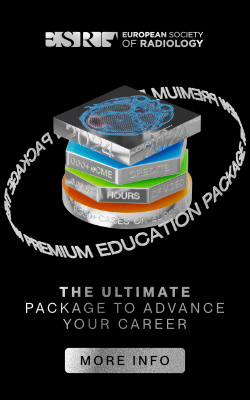Congress:
EuroSafe Imaging 2016
Keywords:
Action 2 - Clinical audit, Action 6 - Clinical audit tool for imaging
Authors:
A. Vargha, E. Vörös, T. Szeleczki, A. Hoffmann, G. Rácz
DOI:
10.1594/esi2016/ESI-0048
Background/Introduction
Oncological diseases are one of the leading causes of death in the world.
Hungary has bad epidemiological data in oncological diseases.
The number of new cases are still increasing in spite of strong efforts we have made in the last decades with screening programs,
modernization of the healthcare infrastructure and trying to contact more citizens through media and roadshows.
Radiology has important role in the tumor-searching period as well as in follow-up.
There are more modalities for oncological patients and there are existing evidence-based protocols which to use when.
Clinical audits and different analyzes are mostly used to control or measure examination performance and the diagnostic value of different modalities maybe to compare them.
Relative few works were done to control and analyze the radiological reports however it seems to be more and more important to know if we use/ have the possibility to use all the important information about the patient when we perform the examination and during reporting.
That’s also an important patient safety issue to give the most correct diagnosis and to use radiation under the most appropriate circumstances.
The question is how radiologists can get the required information.
They can look it up in HIS/RIS,
ask the patient or search the printed documents if they are present.
There are both technical and organizational difficulties to do so even if the patient has all previous documents and images in the same institute where the actual CT-examination is performed.
Nevertheless it is time consuming and can significantly reduce the number of reports of a radiologist.
The most efficient way would be to have the selected data which are important at the examination’s moment.
They are the request forms,
which should fulfill these criteria.
Our everyday practice shows that request forms have a kind of information but it is rare that we find them enough.
What can we do then? Trying to get the missing information by contacting the requestor which is not always possible in time due to organizational matters and then come the problems: late with the report,
finalizing the report with insufficient clinical information.
And then come the diagnostic failures and the failures in therapeutic decision-making.
This is an existing problem even with optimal infrastructure and with optimal number of radiologists/oncologists.
When these circumstances are not optimal the possibility of having more failures is higher.
There is another disturbing factor,
which we realized during the years.
It is the burn-out effect or the “getting used to effect”.
When radiologists can’t get the required information through a long time they become defensive.
In term of reports it means reduction of accuracy and so reduced quality.
When the oncologists don’t get the required report quality they try to reinterpret the reports by another radiologist who will focus for only one question or they reinterpret themselves.
Both solutions are not safe for the patients.
0 0 1 481 2743 [email protected] 22 6 3218 14.0 Normal 0 false false false EN-US JA X-NONE
Oncologic studies are around 30-45% of all CT examinations in Hungary.
So making it more effective would help a lot to patients,
to radiologists and oncologists and could keep budget in a better care,
too.

